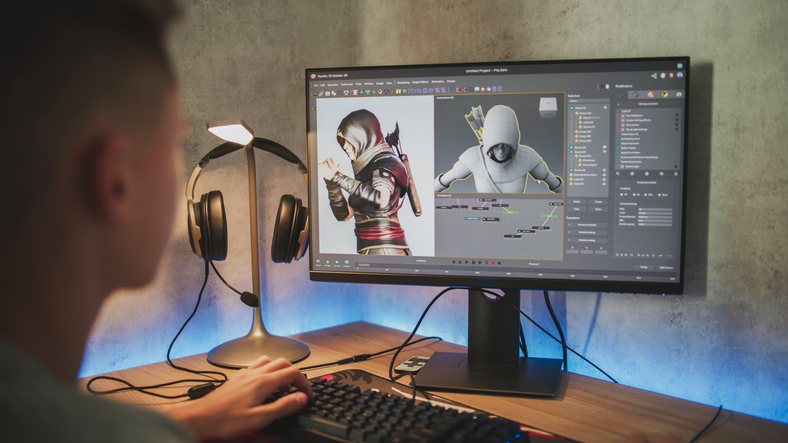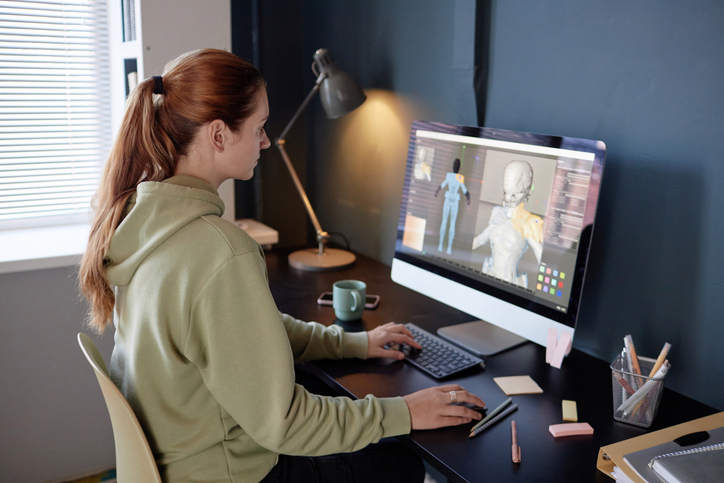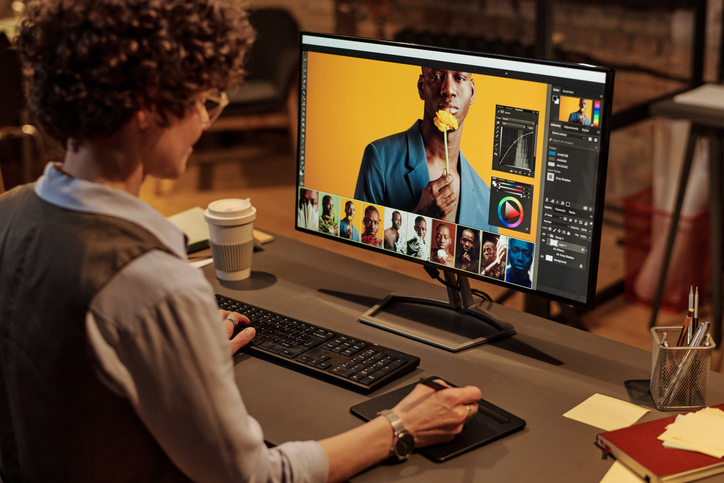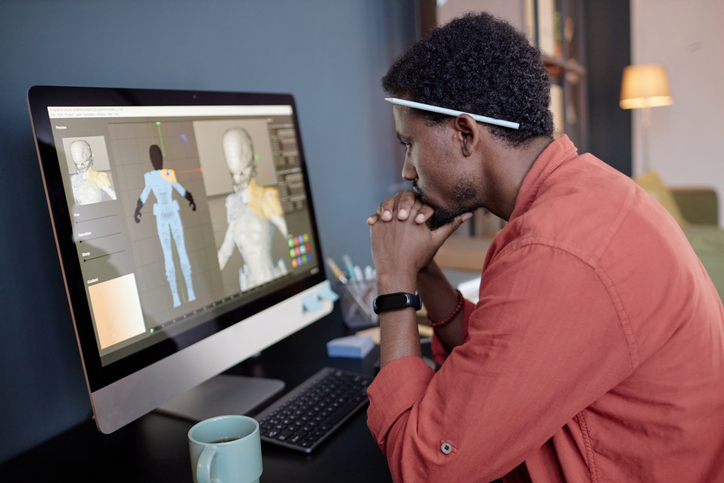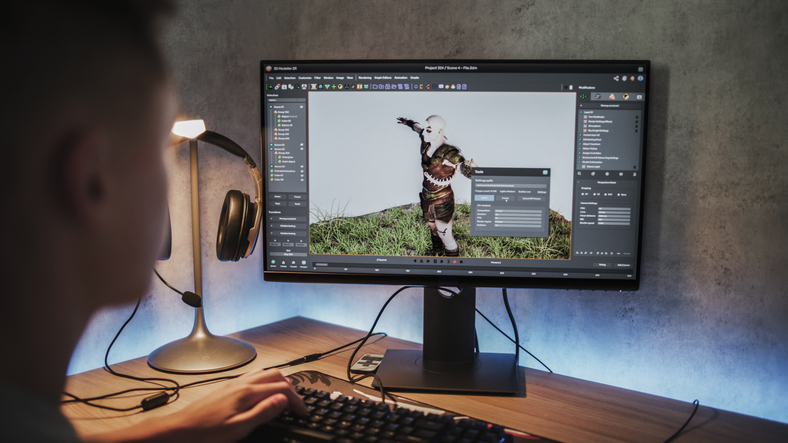In the world of 3D animation, your portfolio is more than just a collection of work, it is your professional calling card. Whether you are applying to animation studios, seeking freelance opportunities, or planning to enter an academic program, a strong 3D animation portfolio can make all the difference. In today’s competitive digital landscape, animators must do more than show technical competence; they must convey storytelling, creativity, and style.
If you are dreaming of a career in animation, building a compelling portfolio is your first step. This article will explore everything you need to know about how to make a 3D animation portfolio that stands out while highlighting how VCAD's 3D Modeling Animation Art and Design Diploma can help you master the process.
What is 3D Animation?
So, what is 3D animation? At its core, 3D animation is the process of creating three-dimensional moving images in a digital environment. Unlike 2D animation, which works on a flat plane, 3D animation gives objects volume and depth, making them appear more lifelike and immersive. The process involves several stages, including modeling (creating digital objects), rigging (building a digital skeleton), animating (bringing the object to life), and rendering (producing the final visuals). This form of animation is widely used in films, video games, architecture, virtual reality (VR), and advertising. Tools like Maya, Blender, ZBrush, and Unreal Engine allow animators to produce incredibly detailed and dynamic content. Modern 3D animation is used in:
- Animated feature films (Pixar’s Toy Story, Frozen)
- AAA video games (Red Dead Redemption 2, The Last of Us)
- Virtual reality experiences
- Medical and architectural visualizations
- Commercials and explainer videos
To succeed in the industry, it is crucial to have a strong grasp of the tools and techniques used in 3D animation skills that are foundational to building your portfolio.
Bonus Read: How to Learn 3D Animation from Scratch
What is a 3D Animation Portfolio?
A 3D animation portfolio also known as a demo reel which is a curated collection of your best animation work. It is designed to display your technical abilities, artistic sensibilities, and storytelling skills. Your portfolio might include short, animated clips, character models, environment animations, or VFX sequences. More than just showing what you have created, your portfolio demonstrates how you think and solve problems as a creative professional. For students and aspiring animators, it can be the key to gaining admission to top programs like VCAD's 3D Modeling Animation Art and Design Diploma or landing your first job in the industry.
Importance of a 3D Animation Portfolio
Your animation portfolio is often more important than your resume. Employers, instructors, and clients are far more interested in seeing what you can do than reading about it. A well-designed portfolio:
- Highlights your unique artistic voice
- Demonstrates your proficiency with industry-standard tools
- Shows your ability to handle diverse types of animation projects
- Builds credibility and professionalism
- Opens doors to internships, job opportunities, and scholarships
In short, a standout portfolio can turn your passion for animation into a tangible career opportunity.
Bonus Read: How Long Does It Take to Learn 3D Animation?
How to Make a 3D Animation Portfolio
Creating your first 3D animation portfolio might seem daunting but breaking it into manageable steps can simplify the process. Here is a practical guide:
1. Define Your Purpose
Determine what your portfolio is for school applications, freelance clients, or job interviews. This will help you tailor your content to match the expectations of your target audience.
2. Select Your Best Work
Quality over quantity is key. Choose 4–8 of your strongest pieces that show your range and technical abilities. Be honest with yourself and seek feedback from mentors or peers. Less is more. Focus on your most polished, impressive projects. Prioritize quality over quantity and place your strongest pieces at the beginning of the reel to grab attention.
3. Tell a Story
Organize your work so that it flows logically. Think of your portfolio like a short film—there should be a beginning, middle, and end. Include animations with clear character motivations, emotional arcs, and dynamic movement.
4. Use a Variety of Skills
Highlight different animation styles and techniques, such as rigging, character animation, environment design, visual effects, lighting, and storyboarding. A varied portfolio highlights your versatility and willingness to take on distinct roles.
5. Include a Showreel
Create a 1–2 minute demo reel featuring your best work. Start strong and keep the viewer engaged throughout. Add a title card with your name and contact information. An ideal demo reel runs between 60 and 120 seconds. For students or newcomers, 30–60 seconds is sufficient so long as every second shines. Always include a title card at the beginning or end of your reel with your name, email, portfolio website, and social links.
6. Provide Context
Include short descriptions or breakdowns for each project. Explain what tools you used, your role in the project, and any challenges you overcame.
7. Host Your Portfolio Online
Make your portfolio easily accessible. Use platforms like Vimeo, YouTube, ArtStation, or your own professional website. Ensure its mobile-friendly and loads quickly.
8. Update Regularly
Your skills will evolve and so will your portfolio. Update it every 3–6 months or when you complete significant new work.
Tips to Make Your 3D Animation Portfolio Stand Out
Here are insider tips to help your portfolio shine:
- Lead with Impact: Start with your strongest piece to hook the viewer from the first frame.
- Be Original: Do not rely on fan art or generic animations. Focus on original content that reflects your voice.
- Demonstrate Problem Solving: Include process breakdowns that show how you overcame animation or rendering challenges.
- Tailor for the Role: Customize your portfolio for the job or program you are applying for. If it is for a game company, include more gameplay-related animations. If it is for film, focus on character acting.
- Keep It Updated: Refresh your portfolio every few months. Replace older work with new, stronger pieces.
- Get Feedback: Share your reel with instructors, peers, or online animation communities to get constructive criticism.
- Tell a Story: Even short clips should have a narrative. Use body language and facial expressions to convey emotions and intent.
- Include Personal Projects: Do not hesitate to display personal work. It often reflects your passion, creativity, and range more than studio work.
Bonus Read: The Career Path of a 3D Animator
Why Choose VCAD to Learn 3D Animation?
If you are serious about a career in 3D animation, a structured education is one of the best investments you can make. The 3D Modeling Animation Art and Design Diploma at VCAD offers a comprehensive pathway to becoming industry ready.
Program Highlights:
- Flexible Learning: Study 100% online or on-campus in Vancouver or Calgary.
- Industry Software Training: Gain hands-on experience with Maya, ZBrush, Houdini, Unreal Engine, and more.
- Expert Instructors: Learn from seasoned professionals who bring real-world insight into every class.
- Portfolio Development: Build a professional-quality demo reel under expert guidance.
- Career Support: Get access to career services, industry mentors, and networking opportunities.
- Approved Program: VCAD’s program is approved by the Private Training Institutions Regulatory Unit (PTIRU) of British Columbia.
VCAD is more than just a school, it is a launchpad for aspiring animators to gain the skills, tools, and portfolio required to thrive in a creative career.
Final Thoughts
A 3D animation portfolio is more than a showcase of your abilities; it is a story of who you are as an animator. Creating one that captures your skills, personality, and potential can unlock doors to exciting opportunities in games, film, VR, architecture, and beyond.
With support from programs like VCAD's 3D Modeling Animation Art and Design Diploma, you will not only learn the technical tools of the trade but also receive mentorship, industry exposure, and the chance to build an animation portfolio that truly stands out.
Ready to take your first step toward an exciting animation career? Enroll in VCAD today and start building a future filled with creativity, innovation, and boundless possibility.





